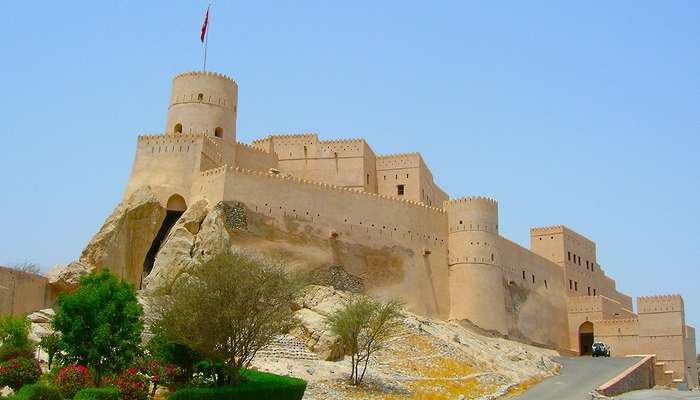Rock carvings dating back to the Iron Age have recently been discovered near the historic Nakhal Fort in the South Al Batinah Governorate of Oman. These carvings, found on the rock on which Nakhal Fort is situated, depict a knight with two horns holding a spear, horses, knights, and various other rock shapes similar to those previously found in the village of Stal in the Wilayat of Al Awabi. Harith bin Saif Al Kharousi, a history researcher and excavation specialist, stated that these carvings date back to the first millennium BC and are comparable to carvings in other mountainous regions in Oman. Among the notable carvings are those of snakes, which are unique to the Arabian Peninsula and were engraved by sunken engraving on the rock.
The carvings of the two-horned knight serve as evidence of ancient man’s impersonation of various animal characters, a theme that has been noted in ancient literature. Al Kharousi suggested that the site be utilized for cultural and tourism purposes, possibly integrating with other tourist services. The Wilayat of Nakhal where these carvings were found is located strategically in the South Al Batinah Governorate, overseeing the Al Batinah Plain on one side and the Western Hajar Mountains on the other. This area was historically situated at the junction of ancient trade routes, and the presence of Ain Al Thawara, a continuously flowing spring, has attracted settlements to the area since ancient times due to the abundant water supply.
The unique rock carvings discovered near Nakhal Fort offer a glimpse into the artistic and cultural practices of ancient civilizations that inhabited the region during the Iron Age. The depictions of knights, horses, and snakes provide valuable insights into the daily lives and beliefs of these ancient peoples. The carvings also demonstrate the skill and craftsmanship of the individuals who created them, showcasing their ability to capture intricate details on the hard surface of the rock. By studying these carvings, researchers and historians can further enhance their understanding of the history and culture of the region during the Iron Age.
In addition to their historical and cultural significance, the rock carvings near Nakhal Fort also have the potential to attract tourists and visitors to the region. The incorporation of these ancient artifacts into the area’s tourism offerings could help promote cultural heritage preservation and generate economic benefits for the local community. By developing guided tours, interpretation centers, and educational programs focused on the rock carvings, the site can become a focal point for cultural tourism in Oman, attracting history enthusiasts and curious travelers alike.
The strategic location of the Wilayat of Nakhal in the South Al Batinah Governorate, overlooking both the Al Batinah Plain and the Western Hajar Mountains, further enhances the appeal of the region as a tourist destination. The area’s rich history, abundant water resources, and proximity to ancient trade routes make it an ideal location for exploring Oman’s cultural heritage. By highlighting the rock carvings near Nakhal Fort as part of a broader tourism development plan, the region can attract a diverse range of visitors interested in history, archaeology, and cultural exploration. This holistic approach to tourism development can help position the Wilayat of Nakhal as a must-visit destination for travelers seeking a unique and enriching experience in Oman.
In conclusion, the discovery of rock carvings dating back to the Iron Age near Nakhal Fort in Oman provides a fascinating glimpse into the ancient past of the region. These carvings, depicting knights, horses, and snakes, offer valuable insights into the artistic and cultural practices of the people who lived there thousands of years ago. By promoting these rock carvings as part of a cultural tourism initiative, the region can work towards preserving its heritage and attracting visitors interested in history and archaeology. With its strategic location, rich history, and unique attractions, the Wilayat of Nakhal has the potential to become a hub for cultural tourism in Oman, offering visitors a memorable and rewarding experience.































